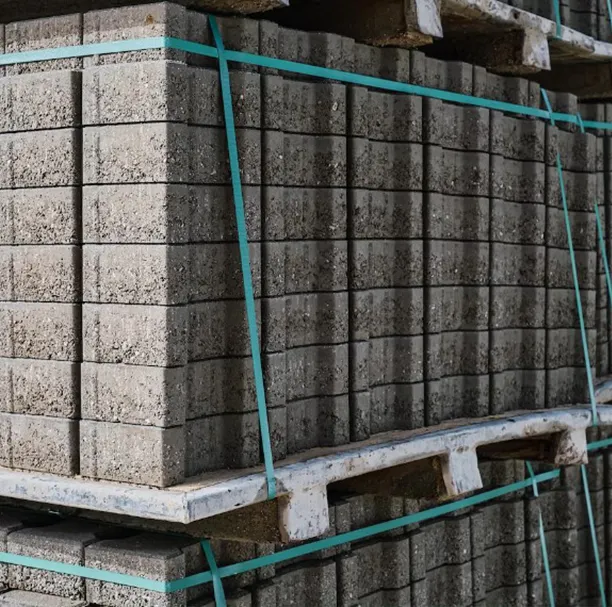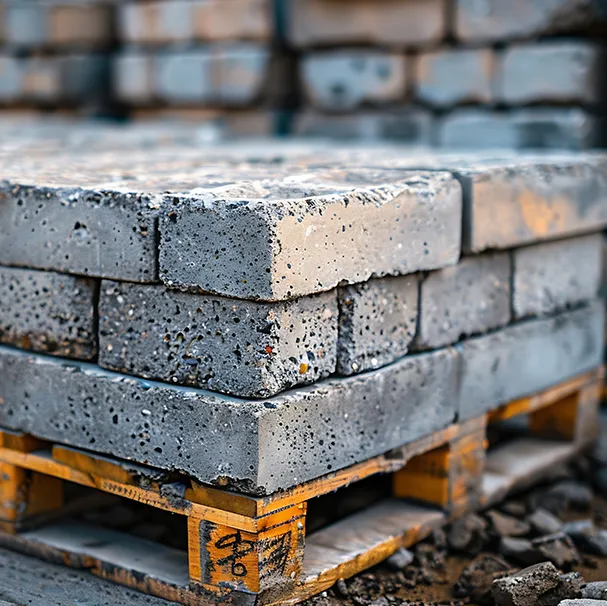Briquette brick is a building material frequently used in the construction sector. It is known as a durable and economical building material. It is produced by shaping materials such as sand, cement, and water under high pressure.
Briquette brick has a variety of uses. Besides being widely used in the construction industry, it is also preferred for insulation purposes, in garden and landscaping applications, as well as in large-scale structures such as industrial buildings, factories, and warehouses.

Briquette Brick Prices
Frequently used in construction, briquette brick is an economical building material used in walls, floors, and various parts of structures. Its characteristics include:
- High durability.
- Provides significant advantages such as heat and sound insulation.
- Fire-resistant structure.
- Produced using natural materials, making it environmentally friendly.
- Available in various sizes and dimensions.
The prices of briquette bricks vary depending on different criteria. The price of these products changes according to the material used, size, and production process. Briquette pricing is done per piece or per square meter. Another factor influencing the price is the type of briquette brick used.
Types of briquette bricks:
Standard Briquette Brick: This type of brick is made from a mixture of cement, sand, and water. It has a durable and long-lasting structure and is preferred for use in interior and exterior walls and load-bearing walls.
Bims Briquette Brick: Bims briquette brick is made from volcanic-origin bims stone. This type of brick is particularly fire-resistant and produced from natural materials. It is commonly used in walls that require heat and sound insulation and in high-rise buildings.
Ytong Brick: This type of brick is produced from a mixture of cement, aluminum powder, lime, and quartz sand. It is generally preferred in energy-efficient projects, both in interior and exterior wall construction.
Pumice Briquette Brick: Made from natural pumice stone, it is suitable for use in industrial structures.
Decorative Briquette Brick: This type of brick is produced for aesthetic purposes and is typically used in garden walls and interior decoration.
Thanks to its different types and properties, briquette brick is a versatile building material used in various fields. With its durability, insulation, and aesthetic advantages, it can be preferred in residential areas as well as industrial spaces.
What is Bims Block?
Bims block is a large-sized building material used in wall construction, made from bims stone. Its most important feature is its lightweight structure, which is highly durable despite its lightness. The most significant advantage of its lightweight nature is that it reduces the load on the structure while providing high insulation. The advantages of these blocks include:
- Easy and quick application. Due to its large size, wall construction is faster, reducing labor costs.
- The lightweight structure ensures safer buildings in case of an earthquake. For this reason, it is frequently preferred in earthquake-prone areas.
- With its aesthetic appearance, it is a building material preferred for both interior and exterior spaces.
The use areas of bims briquette and bims block materials include residential buildings, industrial structures, agricultural and livestock buildings, terraces, and garden walls.
Briquette Brick Dimensions
The dimensions of bricks vary according to the requirements of the building project. The dimensions change based on wall thickness, insulation needs, and usage areas. The most common dimensions are 20x40x20 cm, 10x20x40 cm, and 15x20x40 cm. Depending on these dimensions, the usage areas and properties also vary.
Considering all these features, there are some criteria to pay attention to when selecting brick dimensions:
- Wall thickness and height should be considered, as the height of the bricks varies for thin and thick walls.
- If insulation is needed in the structure, thicker briquette bricks should be chosen.
- The dimensions of load-bearing and non-load-bearing walls differ. Durability is crucial in these walls.
- If the building material is to be used for aesthetic and decorative purposes, thinner dimensions should be preferred.
- The choice of dimensions also affects cost and labor. For example, larger briquettes require less labor, reducing the work duration and providing a cost advantage.
The dimensions of bims also vary according to the requirements of the building project or can be specially produced.

Considering all these factors, it is essential to consider the dimensions of bims and briquette bricks when selecting the appropriate material for your needs.
For more information about briquette bricks and their usage areas, you can contact the CONMACH team.